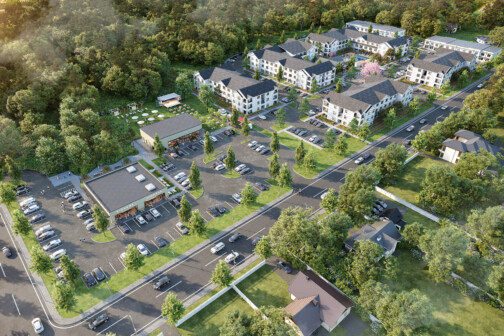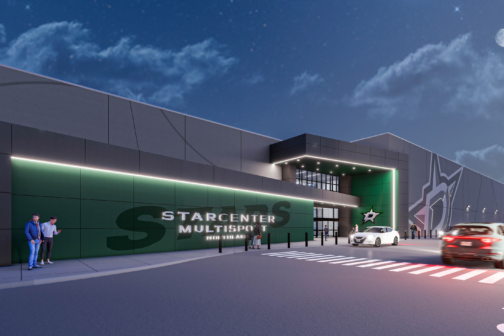For the industrial sector, the past decade has been one of immense growth with seemingly unlimited potential. Year after year, we continued to see demand increase and vacancy rates decline, making it the most robust markets of our lifetime. New supply reached unprecedented levels, and a low-interest rates environment caused capital to flow freely. As rates declined further, borrowers secured attractive financing for new acquisitions, development, or the refinance of existing assets. As a result, prices for industrial real estate soared, invalidating any historical data or glass ceilings present in the marketplace.
As we all know, good things do, in fact, come to an end. Although industrial macro and micro market fundamentals are positively different than what they were leading up to the Great Financial Crisis, this season will present challenges we haven’t encountered in quite some time.

Looking back, by the start of the second quarter of 2022, interest rate hikes to curb inflation started to create hesitation within industrial markets. Yields were ratcheting up, and capital was beginning to adjust its sights. This is far different than what happened at the start of the pandemic. In 2020, everyone froze in time for 60 to 90 days and then proceeded with their business plans as usual (development, acquisitions, tenant demand, etc.). But 2022 was a much different story that has carried over into 2023. There is an unprecedented gap between capital markets and supply and demand fundamentals, which have never been so disconnected.
Growing up in Texas, you learned if you didn’t like the weather, just wait 10 minutes and it would change. The 2022 Capital Markets business was exactly that—a market that was constantly moving—and moving fast!
Though tenant demand continued to be strong, and most markets nationwide had historically low vacancies, debt and equity remained locked up through the end of last year, with capital sitting on the sidelines. Investors acted as if they were in the market (admittedly being more selective), but they had all but paused until the market volatility settled down.
So, what has changed, if anything, in the new year? There are notable lingering effects from 2022 present in the market today. But we are also sensing a fresh feeling in the air, and action bias is visible for the first time in quite a while. It’s early and limited, but evidence of this can be seen in the number of buyers showing up for acquisition deals this quarter versus, what we witnessed throughout 2022.
The majority of the activity is on sales of existing assets. Development deals, from land acquisition to equity raise, to construction financing for all intents and purposes remain frozen. Since more interest rate hikes are anticipated this year, I expect this will be our new normal for the foreseeable future until debt and equity markets loosen up and investors can accurately (and confidently) underwrite deals. The one bogey to watch closely will be tenant demand, especially in Q3 and Q4 of 2023, when we are hopeful capital will begin loosen up.
To tie it all together, here are a few trends that emerged over the past 12 months, as well as my thoughts as to what we can expect moving forward:
• Depending on location, pricing for industrial product has expanded by 150 to 200 basis points from peak pricing levels.
• For the first time in a long time, buyers can buy brand-new, stabilized assets for below replacement cost.
• Regardless of the deal profile, bid sheets for deals went down 75 to 90 percent; however, we are starting to see activity return during the first part of 2023.
• Very few development deals have been capitalized since the summer of 2022, which will curb supply in 2024 and 2025. We expect this trend to continue for the foreseeable future, given that capital is demanding yields that are unachievable without artificially trending models.
• Generally speaking, land values have been cut in half to make development deals pencil. Even with a steep discount, land is almost illiquid in today’s environment, unless it is an interior Tier 1 submarket of Texas.
• For the first time in my career, investment yields are driving rental rates as much as—if not more than—tenant demand.
• Developers that capitalized their deals 12 to 15 months ago are having to significantly adjust their underwriting to maintain any level of spread. My prediction is this will work for some; my concern is it will not work for all deals.
• Build-to-suit deals are more expensive for tenants than leasing speculative development, due to volatile construction costs and lack of visibility into the capital markets. Historically, tenants with the foresight to pursue build-to-suits were economically rewarded.
• Discipline needs to return to the market. There were more than 130 developers last year responsible for the currently 80 plus million SF of industrial under construction in Dallas-Fort Worth, illustrating a lack of discipline in our marketplace entering 2022. (Note, my definition of under construction is any project that is moving dirt or beyond.) As a result, we will see vacancy spike in 2023 when a large portion of this product comes online.
With the new year well upon us, all eyes will remain focused on tenant demand. There is still a strong appetite for industrial, with investors continuing to allocate significant funds towards the sector. We just need data points before they are comfortable jumping back in, which, thankfully, we are starting to see.
Capital markets volume for 2023 will undoubtedly be down and a fraction of what we experienced in 2021. Owners who are IRR-driven will constantly be evaluating a sell now or sell later analysis, while others with legacy basis will look to transact to prune the portfolio or recycle capital. Thankfully, we are entered this market adjustment in a much better position than in 2009. Strong industrial real estate fundamentals can weather significant headwinds especially given the current health of the market coupled with lenders abiding by more conservative regulations imposed after the Great Financial Crisis.
Industrial real estate is resilient and necessary to our everyday lives which isn’t changing anytime soon. The last time I checked, people are not streaming back to brick-and-mortar stores; coupled with global influences like the pandemic, we are learning and becoming less reliant on others around the world. Those influences will lead to growth and innovation in industrial real estate within the U.S.
With the growth in Texas, specifically North Texas, I am confident in saying we’ll come out on the other side just fine. So, let’s take a breath and regain our discipline, give thanks for the fact we live in this great country, and get back to fundamental investing.
Seth Koschak is executive managing director and partner at Stream Realty Partners.





